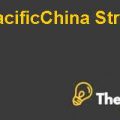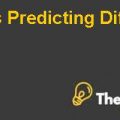
1. GEOGRAPHIC
Geographic segmentation divides the audience on the bases of their geographic units such as nations, states, cities, regions, countries, or neighborhood. Any fast food chain needs to localize the products they are offering keeping in mind the geographical differences in needs and wants and/or preferences. Factors like density, population, climate, etc. should be catered before offering a product. Individual needs of different age groups should be considered according to the region as well. The specific eating habits of the region should also be taking into account, i.e. people prefer hamburgers in America, but not in China. The main focus in this segmentation remains in serving the one area and exploiting the regional preferences to attract the target market as food preferences are not the same everywhere, it helps in identifying locations for the outlets, the locations for advertising, the medium to be used for advertising and the product selection; as different geographic groups have different buying preferences, so consequentially, this helps in designing of products for the right geographic group as well.
With the help of this type of segmentation the targeting becomes easier along with advertising and promotional activities because the market and language is defined and is easy to deal with, monitoring of the target market becomes considerably easier and accessible comparable to when marketing is done without any segmentation. Furthermore, expertise needed in analyzing and gathering the data is lesser (Sara Dolnicar, 2004).
2. DEMOGRAPHIC
Demographics are key points that need to be taken into consideration before starting the operations as this helps in getting a clearer view of the target market. Factors like age, income, occupation, gender, etc. are also taken into account as age group, people with different income brackets, having different occupations, and every gender has their own taste, needs and wants which eventually leads towards difference in preferences. Demographic data also helps in providing a comparison with the other trade areas in which the company is operating and help in selecting the market which deserve more attention and focus.
One of the advantages of using demographic data is that it is easily available and accessible and can be used in deciding where and how the product should be launched. Another advantage of using demographic that can help in establishing brand loyalties among the customers. For example a study showed that in Taiwan people from the age bracket of 15-30 avoid going to traditional stores or market rather they prefer to buy and shop from supermarkets. Besides this, the people in the age bracket of 30-40 also prefer to buy from supermarkets. Similarly, social class and income bracket customer motivates and encourage people to either shop from supermarkets or not (Dawsonb, 2001).
3. PSHYCHOGRAPHIC
It involves factors like consumer personality traits, attitudes, values, interests, and lifestyle. This helps in developing a match between the product and customers' needs and wants. It is very important to know the likes and dislikes of your customer, for example, some people prefer certain environment while others don’t, some are more health conscious while others are foodies, and some prefer fun at weekends while some are usually work oriented. These factors help to understand each segment clearly and design an appropriate product for each segment.
Psychographic segmentation delivers an improved insight of customer as a person and helps in understanding and underlying their needs and motives more clearly, which will provide a better understanding of the customer and helps in designing marketing plans and activities more accurately.
4. BEHAVIOURAL
Consumers show different behaviors when it comes to buying any product, their rate of consumption, the manner of consumption and the usage rate and the insight about their requirements in particular products are few of the key factors that need to be catered while offering a product to a market. Factors like occasions, usage rate, user status, loyalty status, etc. are few of the key in behavioral segmentation. This type of segmentation is for mature markets, as it helps in understanding the individual customer and finding the methods to convert their usage rate from moderate to excess or to persuading the possible customers to switch towards other companies or service providers. However, the market understanding is not as high because the variables are not clearly defined and are purely opinion based.
Things to know about customers
- To find who the customer is very important. If the company is targeting individuals, then it must undergo segmentation process to get a deep insight and understanding of the customer.
- To find the interest and preferences of the potential customer are very important as it leads in developing and selling the right product to the right customer.
- Why customers buy a product is vital and it will help a company in comparing the benefits that it is offering with the benefits customer are seeking..................................
This is just a sample partial case solution. Please place the order on the website to order your own originally done case solution.













